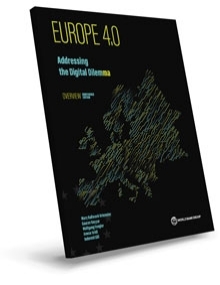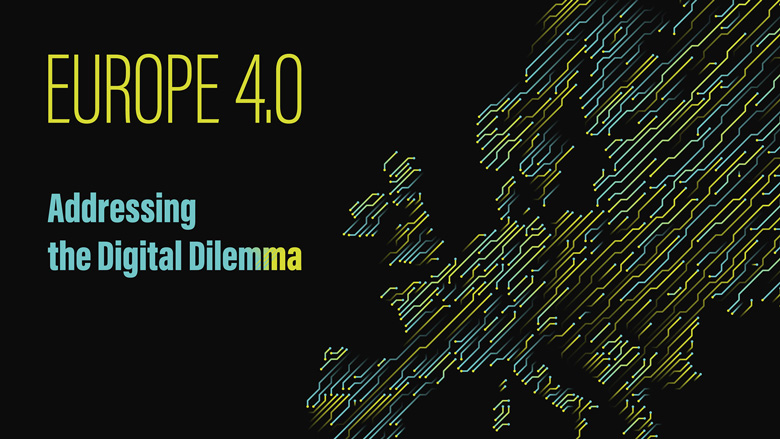
Europe 4.0 : Addressing the Digital Dilemma
Europe 4.0 is attainable. Europe 4.0 is about embracing new digital technologies associated with Industry 4.0 in ways that contribute to Europe’s triple imperative of economic competitiveness, market inclusion, and geographic convergence, while also being aligned with its social values. A coherent set of policies that strengthens competitiveness in technologies where the potential for inclusion and convergence is strongest, while broadening access to opportunities in technologies that otherwise concentrate benefits, is needed to address this digital dilemma for Europe 4.0. Reforms and investments can help new digital technologies achieve Europe’s triple objectives without compromising its social values by making use of the following:
- Scaling markets — completing the digital single market and closing gaps in ‘analog complements’ such as infrastructure, skills and logistics to achieve greater competitiveness, inclusion and convergence;
- Shaping the commercial use of data — addressing challenges posed by artificial intelligence and new types of market dominance to balance competitiveness and inclusion aligned with values of data privacy; and
- Speeding technology adoption — complementing investments in frontier innovation with digital catch-up through supporting applied R&D and strengthening management capabilities so more smaller firms and firms in lagging regions can absorb new technologies.
The COVID-19 pandemic has highlighted the importance of the data economy — and raised the risks in meeting Europe’s economic objectives if the digital dilemma is not addressed. Companies that have embraced digital technologies are better able to cope with the disruptions posed by the pandemic. Going forward, countries and companies that embrace Industry 4.0 will be better placed to face the challenges, but also capitalize on the opportunities, of an increasingly globalized world.
Europe has converged in digital infrastructure, but more needs to be done to accelerate the commercial use of digital technologies. Europe has done well in expanding access to broadband. At least 69 percent of households have access to broadband in every European region, and over 90 percent of households are fully connected in most regions. But convergence between regions in the use of digital services has been slow.
This report focuses on three types of process technologies within Industry 4.0 that are driven by the use of data and can be applied to a range of sectors.
- Transactional technologies better match supply and demand to facilitate market transactions by lowering information asymmetries; examples include digital ecommerce platforms and blockchain.
- Informational technologies exploit the exponential growth of data and the reduced cost of computing; examples include business management software, cloud computing, big data analytics, and machine learning.
- Operational technologies combine data with physical automation to reduce production costs, including labor, materials and, in many cases, energy; examples include smart robots, 3D printing and the Internet of Things (IoT). Differences in the economic drivers of technological change imply different degrees of diffusion or concentration of opportunities.
This report provides new evidence of a digital dilemma in Europe. Operational technologies are where European firms are most competitive, but these tend to concentrate opportunities in larger firms, and existing production and knowledge hubs. Transactional technologies have the maximum potential to promote market inclusion and geographic convergence, but this potential is only being partially realized and few European transactional digital platforms are globally competitive. Informational technologies fall in between, with some market inclusion, but little spatial convergence. And over time, the newest informational technologies have a pattern more like operational technologies, with benefits being realized by larger firms in leading regions. Here too, technology adoption is not widespread, and Europe can lay claim to few companies that are global leaders. This imbalance between objectives and performance needs to be addressed to avoid current trade-offs and realize the full potential new technologies offer. This will be all the more important in light of the COVID-19 economic crisis.
